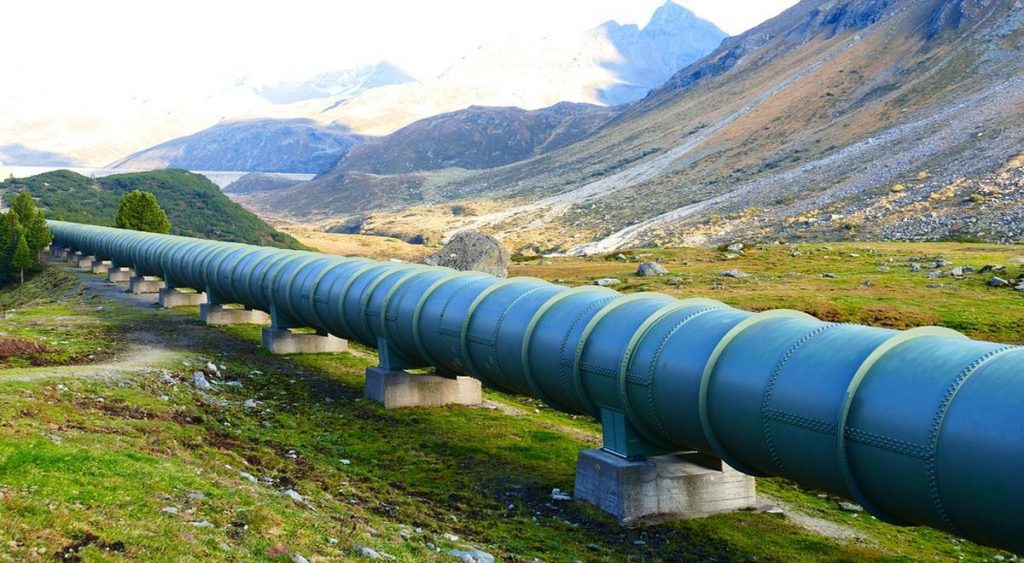In the 1980s Gunnison philanthropist Butch Clark offered a novel way to end the age-old West Slope-East Slope water battles. He suggested that Denver could use the Colorado River’s remaining unallocated water by building a pipeline from the Utah line to the Continental Divide. No future Western Slope water use would be threatened; the only losers would be downstream states – especially California, which had taken Colorado’s unused share for decades.
Butch Clark called his idea the “Colorado Aqueduct Return Project,” which he knew nobody in Denver would take seriously, because of the high cost, water quality issues, and political hurdles. He told me once at Club 20 that he wasn’t especially serious about building that pipeline, but wanted Front Range officials to admit that the only feasible choice was restricting their water use. He wanted a more serious discussion about alternatives for Denver. He accomplished that, but he also planted a seed, and various versions of the pipeline idea have been discussed ever since.
I served on the Colorado Water Conservation Board (CWCB) with Greg Hoskin, the Grand Junction attorney who proposed a more thorough study of the idea in 2002, which he called the “Big Straw.” He is one of the most creative thinkers I ever worked with on natural resources issues, and his presentation at the CWCB was so well reasoned and persuasive that the board voted $500,000 for the study, with Governor Bill Owens’ endorsement. The Denver Water Board didn’t take Hoskin any more seriously than it had Clark, but the idea never really died, either. It was actually fairly modest compared with much more ambitious pipeline schemes around the country.

The 2002 Big Straw proposal was estimated to cost upwards of $5 billion or more, which seemed prohibitive at the time, though it is nothing compared to what Denver could now pay for such a large new water supply. Nor is it close to the hundreds of billions being discussed for a possible solution to the plight of Lakes Powell and Mead. One headline suggests that “Filling Lake Mead with Mississippi River Water Is No Longer a Pipe Dream.”
Last spring Lake Mead fell to 28 percent of its capacity and some observers said it was in danger of reaching its “dead pool,” the level at which it can no longer release water downstream. Some climate activists predict that the Colorado River may only provide half its historic flow by the end of this century. That makes it inevitable that whenever there is a flood in the Mississippi River Valley, someone suggests all that water could sure be useful in the Southwest.
In 2021, Arizona’s legislature asked Congress to investigate pumping flood water from the Mississippi to the Colorado River Basin. Proponents said such a project could take decades and cost billions, though nobody questioned the feasibility from an engineering perspective. Technology is the easiest part, as several engineers have attested.
Although Arizona’s resolution kicked off considerable discussion, academic papers, and conferences, it wasn’t a new idea, either. In the late 1960s Western Slope Congressman Wayne Aspinall, powerful chairman of the House Interior Committee, fended off a proposal to pipe water from the Columbia River to the Colorado. Nobody said it wouldn’t work; that debate was all about money and environmental impact. Plenty of lobbyists just wanted their share of the immense cost, and Congressmen their share of the credit, as with all water project debates.
During that era, numerous massive river diversion projects were proposed, to pump from the Great Lakes, Alaska, and elsewhere. None came to fruition, not only because of the cost. Much of the country has always been skeptical of California’s supposed dire straits. That skepticism is healthy and well grounded, more today than ever.
If California didn’t need the Colorado River – and it doesn’t – Arizona’s and Nevada’s water problems would evaporate. California is allotted more than both states, and uses more than its allocation, with the blessing of the Bureau of Reclamation, which operates the dams. The Bureau, and the other six Colorado River states, should insist California save the Colorado River by developing its own infinite water supply – the Pacific Ocean.
California officials instead assert their legal entitlement, legitimately. But they say the drought situation is desperate, no end in sight. Don’t desperate times require desperate measures? Desalination plants cost millions, perhaps billions. Californian has the world’s fifth largest economy, its GDP approaching $3.5 trillion. It can afford to solve western water problems, without a giant straw from any river.




Comments on this entry are closed.